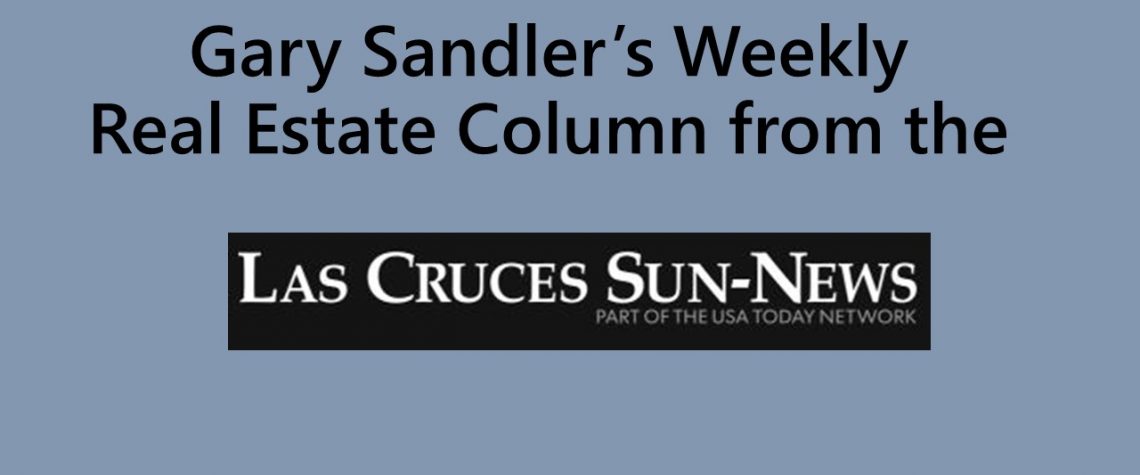-
 Mar 31, 2017 Mortgage rates remain near historic lows
Mar 31, 2017 Mortgage rates remain near historic lowsPublished 31 March 2017
LAS CRUCES – Yes, mortgage rates have been on the rise. But not to the extent most people think. According to Freddie Mac’s weekly Primary Mortgage Market Survey published on March 23, the rate for a 30-year, fixed-rate mortgage was 73 basis points, or just under three-quarters of a percent, above the lowest conventional rate posted over the past 46-years.
A little history may put things into perspective. Freddie Mac began tracking the cost of the 30-year, fixed mortgage on April 4, 1971. At that time the rate was 7.31 percent. Rates were rising at the time and continued to climb until October 1, 1981, when the cost of mortgage money hit an all-time high of 18.45 percent. By the time March of 1987 rolled around, the rate had fallen by more than half, to 9.04 percent. The rate then ticked up into the 10 percent range and hovered there for just over three-and-a-half years before falling into the “nines” in December of 1990.
Rates then began their downward trajectory, eventually hitting the lowest-on-record rate of 3.5 percent in March of 2013. The rate then bounced around in the “threes” before rising to 4.20 percent in January of this year. The March 23 survey pegged the rate at 4.23 percent. So, to what extent does the difference between the record-low rate of 3.5 percent and today’s rate of 4.23 percent affect buyers?
The answer is slightly. The monthly principal and interest payment for a $150,000 loan at 3.5 percent is $674. Bump the rate to 4.23 percent and the payment rises to $736. That $62 increase would require additional income of around $207 per month to keep the amount of the payment to no more than 30 percent of the buyer’s monthly gross income. A $1.19 per hour raise would do the trick for the typical wage earner.Just wondering: Have you asked yourself how buyers, sellers and Realtors managed to conduct business with rates approaching 19 percent in 1981? I had been licensed for 7-years at that time and quickly learned that few buyers could qualify at the record-high rate. The solution was employ a hybrid financing strategy. At the time, FHA, VA and conventional loans were fully assumable without qualifying, so the first order of business was to utilize the seller’s existing mortgage for part of the financing. (Woe be the seller who had no loan on his home.) The remainder of the financing was obtained at market rates.
As an example, a buyer who wanted to purchase a $100,000 home would offer to assume the seller’s existing loan of say $60,000 at 8.0 percent. The remaining $40,000 needed to complete the purchase would be in the form of a 5 percent, or $5,000 down payment, and a new 18.5 percent second mortgage for the remaining $35,000. If the blended rate of the two loans didn’t exceed around 12 percent (our blended rate in this scenario is 11.9 percent), buyers would flock to the closing table.
The bottom line is that even if rates rise a bit more, buyers are still lucky to be able to borrow money at such historically low rates.
See you at closing!
Gary Sandler is a full-time Realtor and president of Gary Sandler Inc., Realtors in Las Cruces. He can be reached at 575-642-2292 or Gary@GarySandler.com
About author
-
-
About Author
Gary Sandler
-
© 2022 Gary Sandler - Website Developed by: Digital Solutions